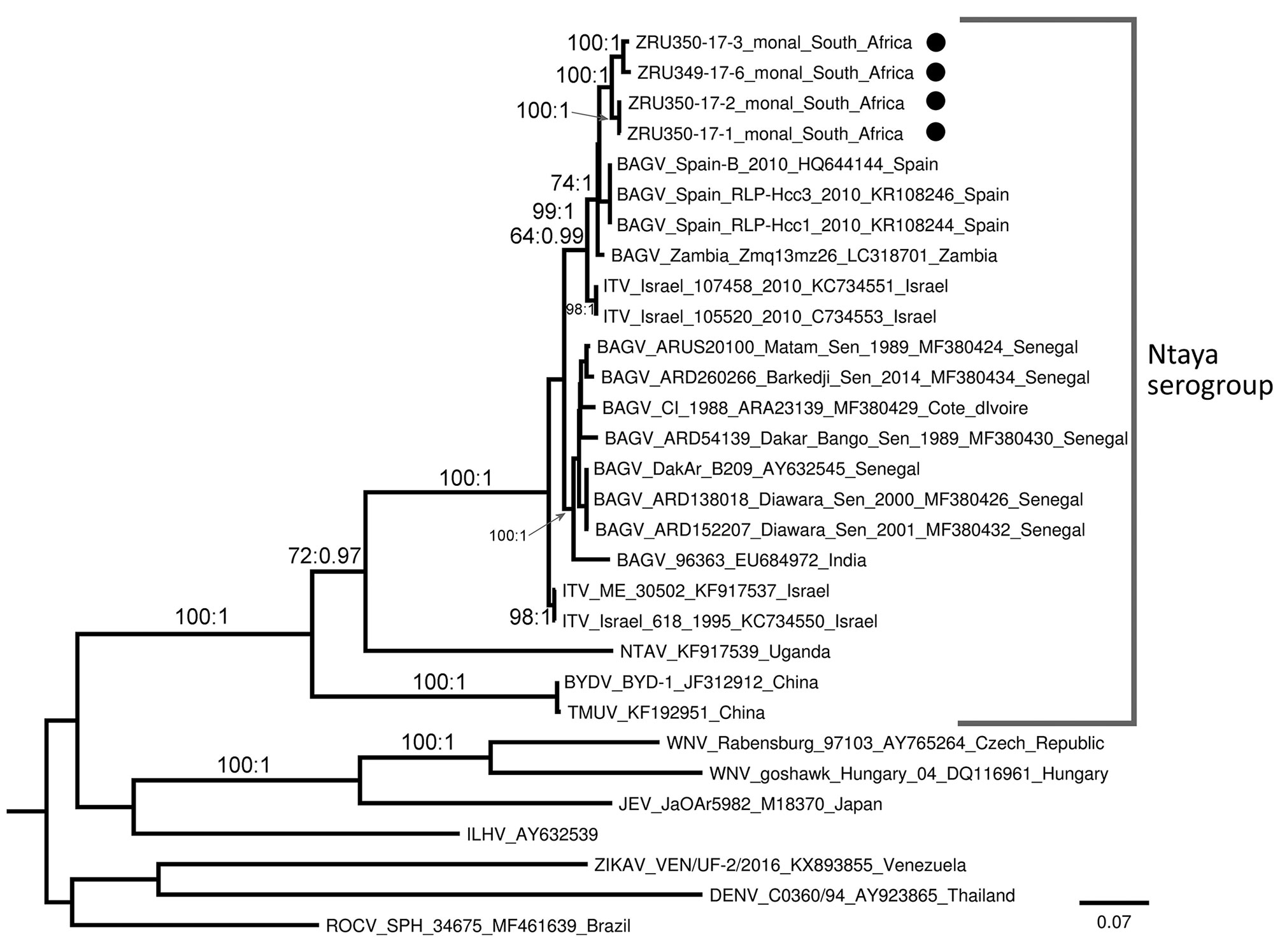Volume 25, Number 12—December 2019
Dispatch
Bagaza Virus in Himalayan Monal Pheasants, South Africa, 2016–2017
Figure 1

Figure 1. Maximum-likelihood phylogram of BAGV isolated in samples from Himalayan monal pheasants (black dots), South Africa, 2016–2017. Phylogram represents partial (1,079 nt) nonstructural coding gene 5 (NS5; taxa = 30). Bootstrap support with values >60 indicated on branches with posterior probabilities >0.95 from a maximum clade credibility tree. BAGV strains from this study are available in GenBank under the following accession nos.: ZRU349/17/6, no. MN329586; ZRU350/17/1, no. MN329584; ZRU350/17/2, no. MN329585; ZRU350/17/3, no. MN329587. Scale bar indicates nucleotide substitutions per site. BAGV, Bagaza virus; BYDV, Baiyangdian virus; DENV, Dengue virus; ILHV, Ilheus virus; ITV, Israel turkey meningoencephalitis virus; JEV, Japanese encephalitis virus; NTAV, Ntaya virus; ROCV, Rocio virus; TMUV, Tembusu virus; WNV, West Nile virus; ZIKAV, Zika virus.
1These authors contributed equally to this article.